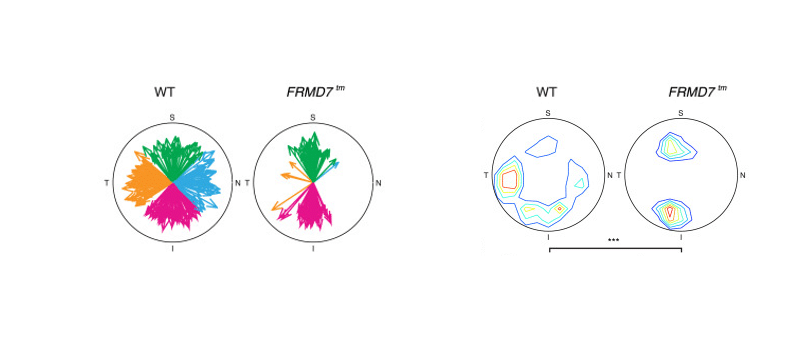Congenital Nystagmus Linked to Defect in Retina’s Neurocomputation
Wednesday, November 30 2016 | 00 h 00 min | Vision Science
In a child with congenital nystagmus, sometimes called “dancing eyes,” their eyes involuntarily dart back and forth due to a defect in their horizontal optokinetic reflex, causing loss of vision which occasionally is bad enough for sufferers to be legally blind.
In 70 percent of congenital nystagmus cases, the culprit has been identified as the gene FRMD7, but until now it was not known how that gene led to the disease.
But new research from the Friedrich Miescher Institute for Biomedical Research (FMI) in Basel, Switzerland, has shown that non-functional FRMD7 leads to a defect in the retina in starburst amacrine cells, part of the retina’s “computational network.”
Neurobiologists were able to track the electronic signal from thousands of ganglion cells as the retina of mice processed moving objects, and they noticed that in the absence of FRMD7, they totally lost signal in the horizontal direction.
“To my knowledge this is the first time that we can link a disease to a defect in neurocomputation,” said Keisuke Yonehara, the study’s lead author. The researchers believe that in the absence of FRMD7, connections between starburst amacrine cells and retinal ganglions do not properly form, a developmental step which occurs after birth.
With a model of the disease now in hand, scientists are now equipped to further investigate its molecular mechanisms.
Read the full text of the article HERE.








